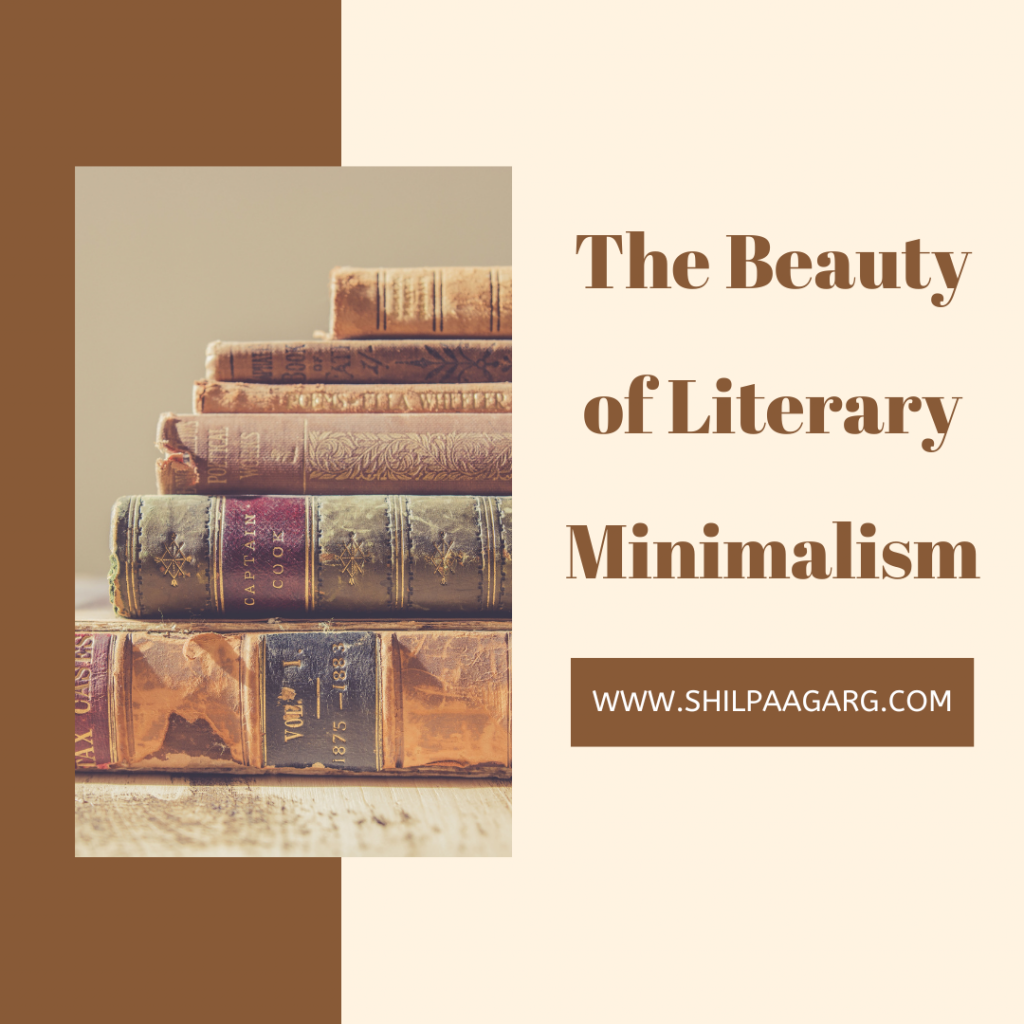Literary minimalism is a writing style that has been gaining popularity in recent years. This style emphasizes simplicity, clarity, and brevity, and has been used by some of the most notable writers of the 20th century. In this post, let’s explore the beauty of literary minimalism.
Literary minimalism is characterized by a focus on the essential elements of a story or text. It emphasizes a minimal use of descriptive language and extraneous details. This approach allows readers to focus on the most important parts of a story and create a deeper connection with the characters and themes.
Ernest Hemingway is one of the most famous writers associated with literary minimalism. Hemingway’s writing style is often referred to as the “Iceberg Theory,” which emphasizes conveying the meaning of a story through subtext rather than explicit description. This minimalist approach to writing is evident in his works such as “The Old Man and the Sea” and “For Whom the Bell Tolls.”
Raymond Carver, Ann Beattie, and Amy Hempel are other notable writers associated with literary minimalism. Carver’s short stories are known for their spare, realistic style and focus on ordinary people and situations. Beattie’s stories explore alienation and disconnection in modern society. Hempel’s works are characterized by their compressed style, attention to language, and imagery.

55 Fiction, which I have explored on my blog here, is a type of storytelling that emphasizes brevity and essentialism. It is a form of literary minimalism that challenges writers to convey a complete story using only 55 words. You may check out my contribution towards literary minimalism by clicking on Fiction section. Do check my favorite 55 Fiction Pattern.
Additionally, minimalism has found application in poetry and nonfiction too. In poetry, minimalism often involves the use of spare, concise language and a focus on images and sensory details. You may check out my friend Esha’s Micro Poetry for this year’s AtoZ Challenge. Nonfiction minimalism in involves simplifying complex ideas into clear, simple language. It also focuses on the essential facts and arguments of a subject.
Whether you are reading or writing, literary minimalism invites you to engage with the essential elements of a story or text. By prioritizing simplicity and brevity, this style challenges you to appreciate the power and beauty of minimalism in language and in life. Why not try your hand at writing a minimalist story or poem and see where it takes you?
I love your posts on minimalism as I follow the same. Minimalism introduced me to a level of peace that I wasn’t expecting.
It’s a lovely clean and disciplined style which I enjoy reading. I’m definitely not a user of it though. 🙂
Wow ! I never thought of this style in this way.I now find the old fashioned way of writing far too tedious and pedantic ….
Loved reading about literary minimalism. Definitely a beautiful concept
Wow…i do practice literary minimalism but i never knew there is such a thing. Thanks for sharing this, Shilpa.The use of flowers adjectives and adverbs has reduced a lot.
I hadn’t realized this form of literature to date. Thanks for introducing me to it- I will definitely add a few reads this year to explore it, though I have read some of Hemmingway earlier but don’t remember it much.
I enjoy reading minimalistic writing. It does away with superfluous words and gives me a clearer view of the feelings being explored.
Simple things always become popular because everyone can understand them.
I support literary minimalism and always try to keep my writings simple and comprehensible. We don’t need margins to communicate our ideas.
A very interesting style of writing indeed. Very Much needed. Thanks for sharing this. I will research more about it.
I think my writing is as simple as I think I am. My husband may think differently haha but I do write my blogs in simple easy to understand words and sentences. Do read my simple work and let me know if you agree.
This is new to me Shilpa. I did not heard about literary minimalism before but this concept sounds interesting to me. though creating a piece in 55 words seems like a challenging task but it is great that many amazing writers are able to do that. another great post.
Your exploration of literary minimalism is captivating and insightful! The post beautifully highlights the essence of this writing style and its significance across various genres. I particularly enjoyed the mention of 55 Fiction and its connection to brevity and essentialism. Keep up the fantastic work! ✨
I read Hemingway’s Old Man and the Sea ages back. I guess it’s time to read it with a different perspective now. I haven’t read Raymond Carver, Ann Beattie, and Amy Hempel. However, Your Fiction 55 Pattern story gave me goosebumps. Minimalism is an art which leaves the subject open to many interpretations.
You actually presented a new way of visualizing minimalism in life through your contents and now this content on literary minimalism won my heart. Thanks for sharing such brilliant contents.
I find your series on minimalism very enlightening and thought provoking. To practice minimalism in speech and writing would be the epitome of minimalism I think.
I have done those 55 fiction posts back then too and they’re a good example of brevity and minimalism in writing. This is an interesting concept and liked by readers as well.
Honestly, dear your post struck a chord and so did your 55-word fiction I checked out, the art of conveying more in fewer words, I love it. I will be mindful of this too.